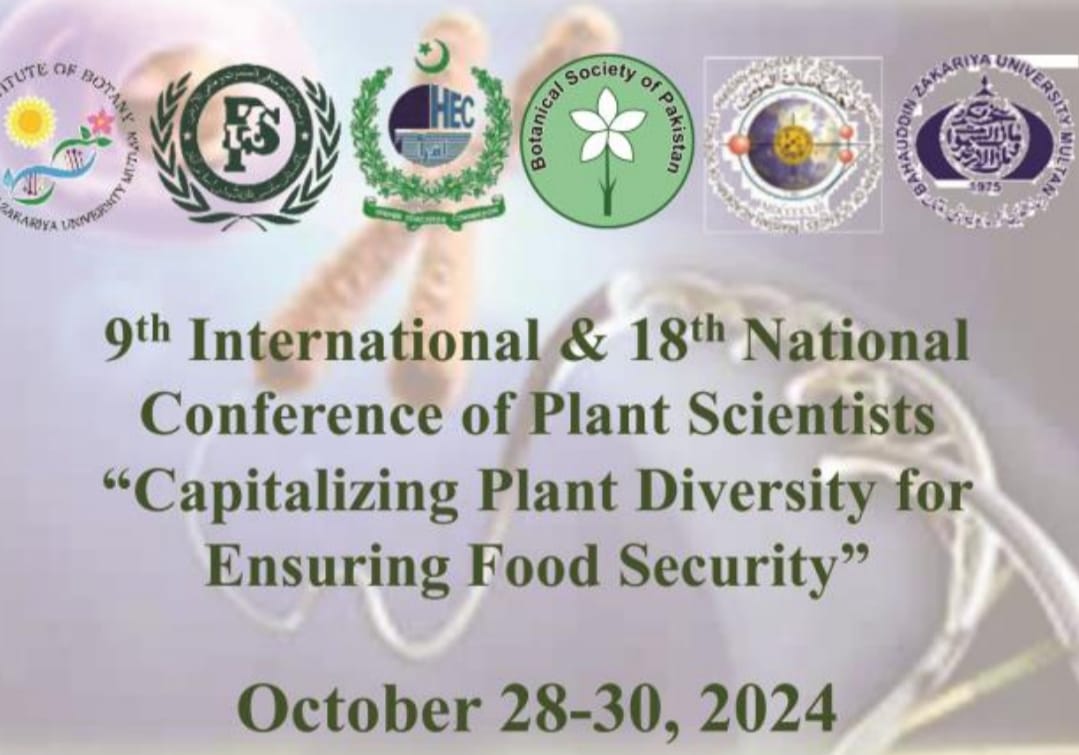
PJB-2024-242
Faiz Ur Rehman, Muhammad Saleem Khan, Mansoor Ali Shah, Sikandar Aziz, Muhammad Ali Shah and Syed Majid Rasheed
Abstract
This study was aimed at assessing a detailed genetic analysis of five parental populations of Brassica napus L. along with its F2 population using Hayman’s approach. A significant contribution of F2 crosses was noted for important traits, including BKUC7 x BKUC8 for days to 50% flowering (67 days), BKUC3 x BKUC7 for maximum plant height (105.5 cm) and siliqua plant-1 (86), BKUC3xBKUC8 for highest oil content (42.6%) and BKUC4 x BKUC8 for high protein content (27.4%). The results showed that self-combination of BKUC4 and BKUC8 had the least glucosinolate concentration (52.2%) while the highest level was of oleic acid (55.0%). Likewise, the lowest erucic acid concentration (41.7%) was recorded for BKUC2xBKUC4. A negative inbreeding depression for days to 50% flowering initiation (-2.48%) and glucosinolate (-17.79%) and linoleic acid (-43.13%) concentrations was recorded for P4, while that of erucic acid (-27.31%) was noted for P1. BKUC2 x BKUC3 has shown a desired negative heterosis of -14.86% and -19.43% for days to 50% flowering and erucic acid concentration, respectively. Similarly, BKUC2 x BKUC8 has shown a positive heterosis for oil content (13.18%). Protein content (4.83%) and oleic acid concentration (3.15%) were evident for BKUC4 x BKUC8, while BKUC2 x BKUC7 displayed a desired negative heterosis up to -21.14% for GSL. Statistical analysis has shown a significant role of GCA and SCA for all traits except siliqua plant-1, which validates the active role of additive and non-additive genetics. Over-dominance and partial dominance gene action were mainly observed for all traits in this study. Overall, a high heritability and desirable positive and negative heterosis for most important traits, like oil content, erucic acid and glucosinolate concentrations, protein content, and days to 50% flowering were observed in our study. In conclusion, our findings provide new insights for future breeding studies on the F2 progenies of diallel crosses of B. napus L
To Cite this article: Rehman, F.U., M.S. Khan, M.A. Shah, S. Aziz, M.A. Shah and S.M. Rasheed. 2025. Genetic analysis of quantitative and qualitative traits in Brassica napus L. using F2 progenies of diallel crosses through Hayman’s approach. Pak. J. Bot., 57(4): DOI: http://dx.doi.org/10.30848/PJB2025-4(17)
Download PDF


